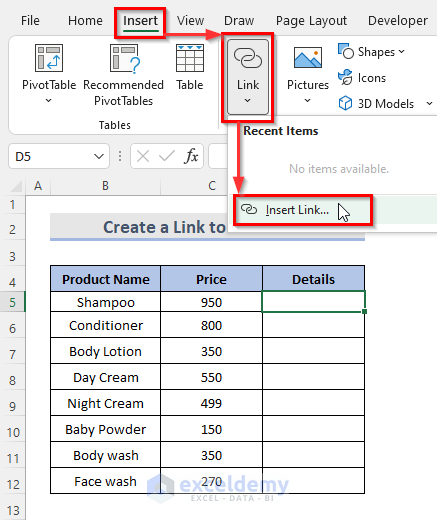3 Ways to Link Data Between Sheets in Excel 2007

In today's interconnected data world, linking information across different sheets in Excel 2007 can greatly enhance productivity and organization. Whether you're managing financial models, consolidating reports, or simply keeping track of project data, knowing how to link data effectively is essential. Here, we'll delve into three methods to link data between sheets, ensuring your spreadsheets work seamlessly together.
Method 1: Using Cell References

Cell referencing is the most straightforward way to link data in Excel 2007. Here’s how to do it:
- Navigate to the Sheet: Go to the sheet where you want to display the linked data.
- Start the Formula: In the cell where you want the data, start typing with the equal sign (=).
- Point to the Cell: Click the sheet tab where your source data is located, then click on the cell. Excel will automatically generate the reference.
- Complete the Formula: Press Enter. Now, any changes in the source cell will update the linked cell.
Example: Suppose your data is in cell A1 of Sheet2, and you want to reference it in Sheet1. You would type =Sheet2!A1 in Sheet1's cell.
Method 2: Using Defined Names

Defined names offer a more dynamic and flexible way to link data, especially when dealing with multiple references:
- Name the Range: Select the cells or range you want to link. Go to Formulas > Define Name, and give it a descriptive name.
- Reference the Named Range: In another sheet, you can now use this name in a formula like =YourName.
- Benefits: This method allows for easier formula management and updates; if the source range moves or changes, the name automatically follows.
Example: If you name the cells B1:B5 as "Sales", you can reference it in another sheet with =SUM(Sales) to sum up all sales values.
Method 3: External Links with VBA

For advanced users, using Visual Basic for Applications (VBA) can automate the process of linking data across workbooks:
- Open VBA Editor: Press Alt + F11 or go to Developer > Visual Basic.
- Create a Subroutine: In the VBA project window, insert a new module and write the VBA code to link your sheets.
- Sample VBA Code: Below is a basic example to link data from one workbook to another:
Sub LinkData()
' Workbook and sheet variables
Dim SourceWB As Workbook, TargetWB As Workbook
Dim SourceSheet As Worksheet, TargetSheet As Worksheet
' Open the source and target workbooks
Set SourceWB = Workbooks.Open("C:\Source\SourceWorkbook.xlsx")
Set TargetWB = ThisWorkbook
' Set sheets
Set SourceSheet = SourceWB.Sheets("Sheet1")
Set TargetSheet = TargetWB.Sheets("Sheet2")
' Link data
TargetSheet.Range("A1") = SourceSheet.Range("B2").Value
' Close the source workbook without saving
SourceWB.Close SaveChanges:=False
End Sub
Note: This method requires some knowledge of VBA, but it offers immense control over data management, including error handling, dynamic links, and updates.
Using these three methods, you can link and manage data in Excel 2007 with varying levels of complexity and flexibility, suited to different needs and proficiency levels. Each approach has its advantages:
- Cell References: Simple, direct, and widely used, suitable for beginners to intermediate users.
- Defined Names: More dynamic and easier to manage across multiple sheets, perfect for intermediate to advanced users.
- VBA: Offers full control and automation, ideal for advanced users looking to streamline data manipulation tasks.
Through these methods, Excel 2007 users can efficiently link data between sheets, enhancing the functionality of their spreadsheets and allowing for more organized, streamlined workflows. Whether you're managing personal budgets or coordinating extensive business reports, understanding these techniques is key to optimizing your work within Excel 2007.
What happens if the source cell or range changes?

+
If you’ve used a cell reference, the linked cell will automatically update with any changes made to the source cell. For defined names, the reference will update if the named range is adjusted or moved within the workbook. However, external links via VBA need manual updates or code modification to reflect changes in source data.
Can I link data across different Excel files?

+
Yes, you can link data across different Excel files using external references or VBA. For cell references, you would use the structure [FileName]SheetName!CellReference, while VBA can handle more complex scenarios with file handling.
What are the security concerns with using VBA for linking data?

+
VBA scripts, particularly those that run automatically or interact with external sources, can pose security risks. Ensure you only run macros from trusted sources, enable macro settings cautiously, and regularly back up your work to mitigate risks associated with VBA code execution.